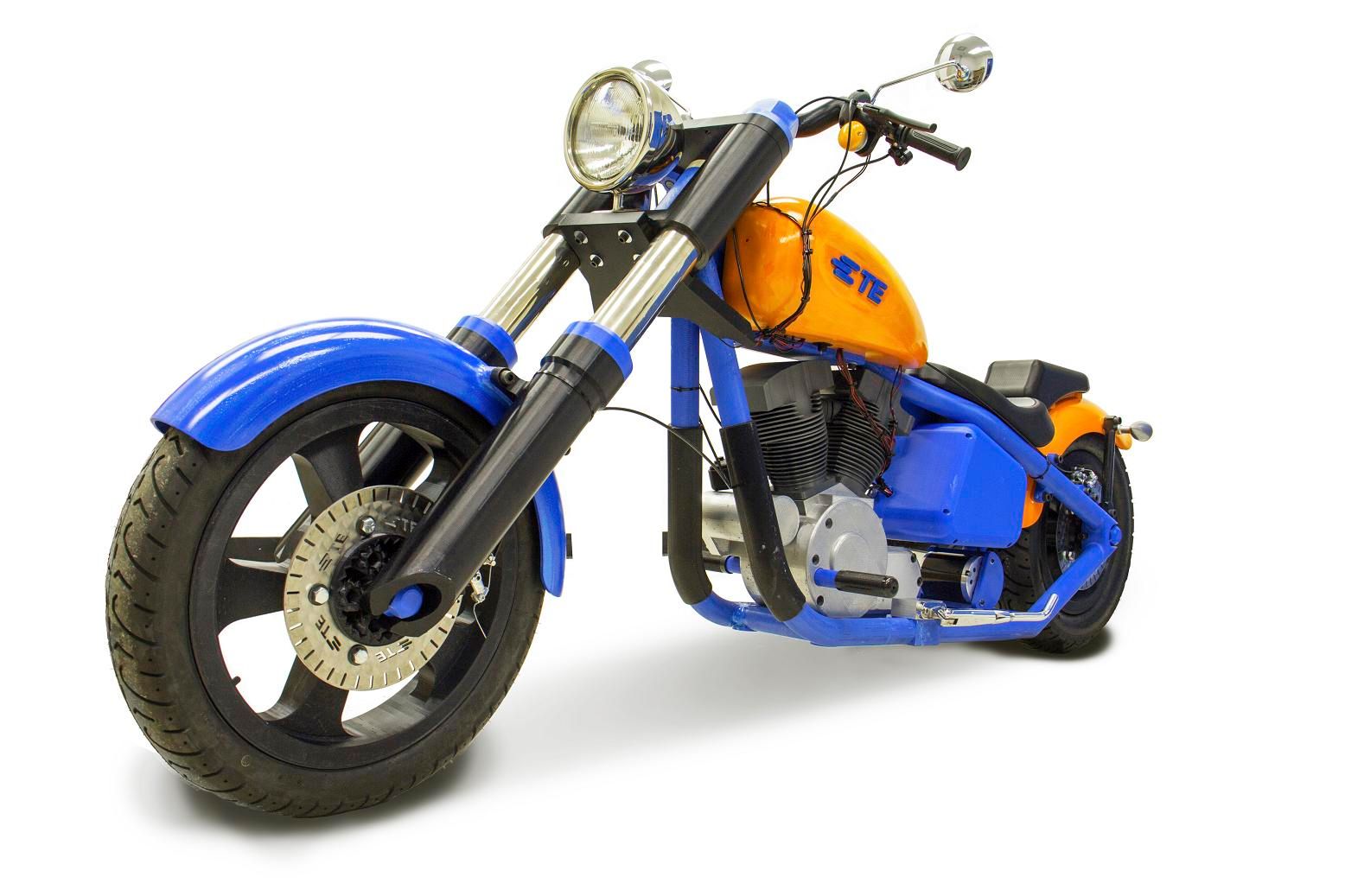TE Connectivity, a company known for its work on 3D printing, unveiled a fully functional, 3D-printed motorcycle at the Rapid 2015 3D Printing fair in Long Beach, California. While it isn’t the first 3D-printed motorcycle to be featured on these pages, the fact that it can actually function and not serve as a mere showpiece could be a major breakthrough in the advancement of the technology as it pertains to whatever future role 3D printing might have in the motorcycle industry.
The fundamental parts of the TE Connectivity’s Harley-Davidson Softail-inspired, 3D-printed motorcycle is made up entirely of plastic, printed in a computer and made up of far too many components than even its designers can remember. Complicated as the process appears to be, TE Connectivity was still able to create a frame that can support 400 lbs, or as many as two passengers.
It’s a remarkable creation, but one not entirely devoid of the usual elements and trinkets motorcycles need to run properly. To be clear, the 3D-printed bike also features many of the amenities any motorcycle would need to work. It has a small electric motor, functional rubber tires, and plenty of other outsourced materials like electrical wiring, mirrors, a braking system, an electrical wing, and a battery.
The electric motor and the battery, in particular, provide the crucial difference of this 3D-printed bike from all of its contemporaries. It’s not much, but that electric motor that reportedly can generate 1 horsepower should be more than enough reason for a lot of people to think of the enormous gains 3D printing has achieved in recent years.
As far as progress goes, a fully functional, 3D-printed motorcycle is a huge advancement in the motorcycle industry. How it progresses moving forward may still be a matter of debate, but as far as once believing it to be impossible, well, that apparently isn’t the case anymore.
Continue reading to read more about TE Connectivity’s 3D-printed motorcycle.
Why it matters
The possibilities are still unknown at this point because we still don’t know how 3D printing can translate in the motorcycle industry on a mass production basis. But the mere fact that such possibilities are now in the open is reason enough to become optimistic of what could be a game-changing future for the business.
To be clear, TE Connectivity did more than just print plastic parts on a printer. The bike’s main load-bearing parts were actually created using Fused Deposition Modeling (FDM) technology. If you don’t know what that is, don’t feel too bad. I had to do my own digging to learn about it too. Anyway, FDM technology is essentially a procedure that involves injecting layers of acrylonitrile butadiene styrene (ABS) plastic enriched with the heat resistant resin Ultem 9085.
The complexity of the process doesn’t end there either. TE Connectivity discovered early on that building a functional bike using 3D printing technology also involves taking into account certain immutable laws of physics like creating something strong enough to withstand heat, pressure, and in the case, a person’s weight. Numerous tests were done to ensure that load-bearing parts were strong enough to handle whatever they’re trying to hold up and sturdy enough to withstand whatever heat is generated in the process. This applies to a number of elements of the bike, including parts of the frame near the engine and the wheels.
The overall outlook of TE Connectivity’s ground-breaking functional 3D printed motorcycle will likely depend on how receptive this method is on a more grandiose scale. It’s one thing to build a bike using this technology; it’s another thing entirely to build a million bikes using the same technology. That’s a huge difference right there and yet, it still shouldn’t discount the tremendous advancements being made by 3D printing technology.
Hopefully, the motorcycle industry will have more use for it in the future than it does now.

